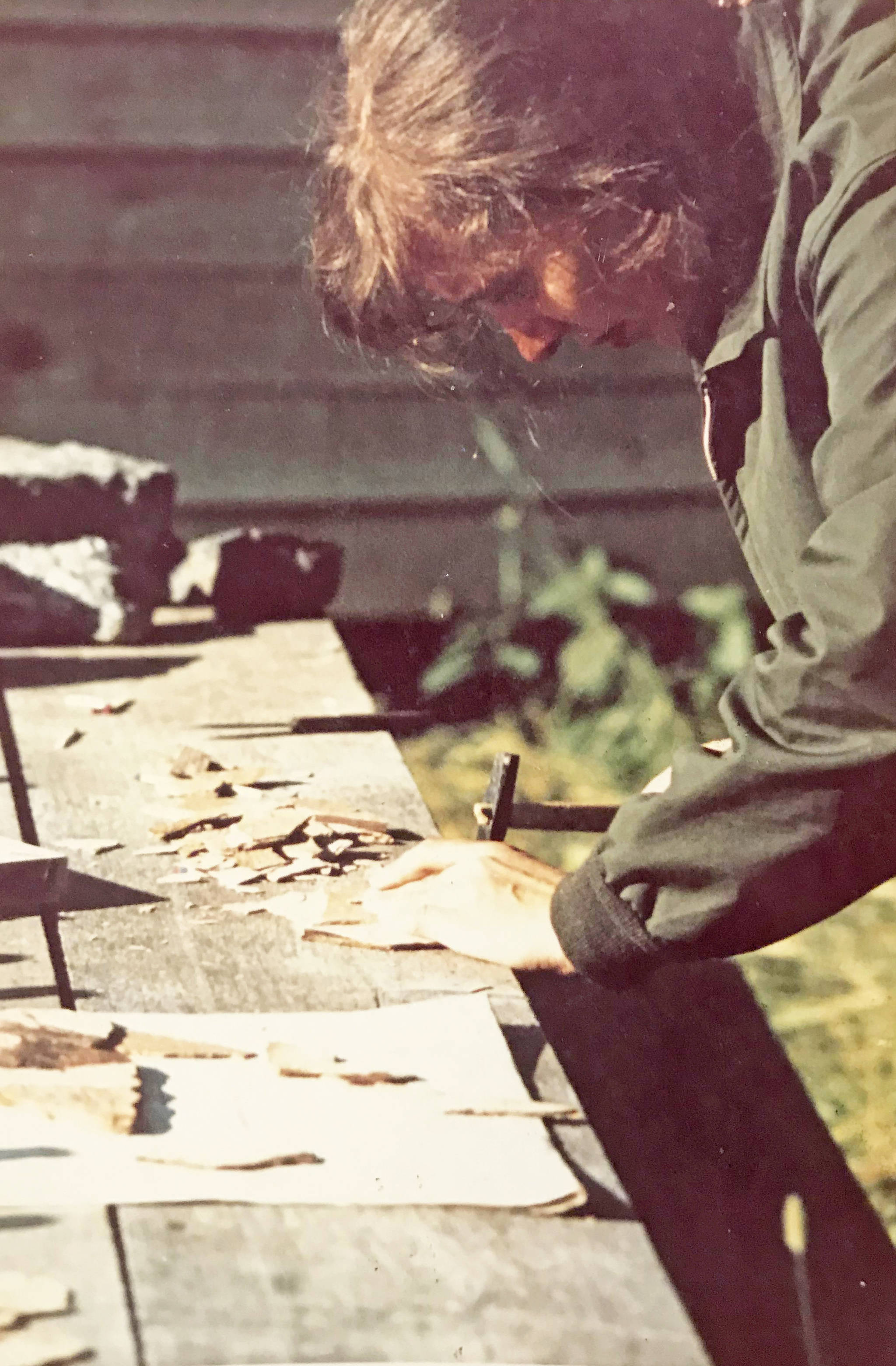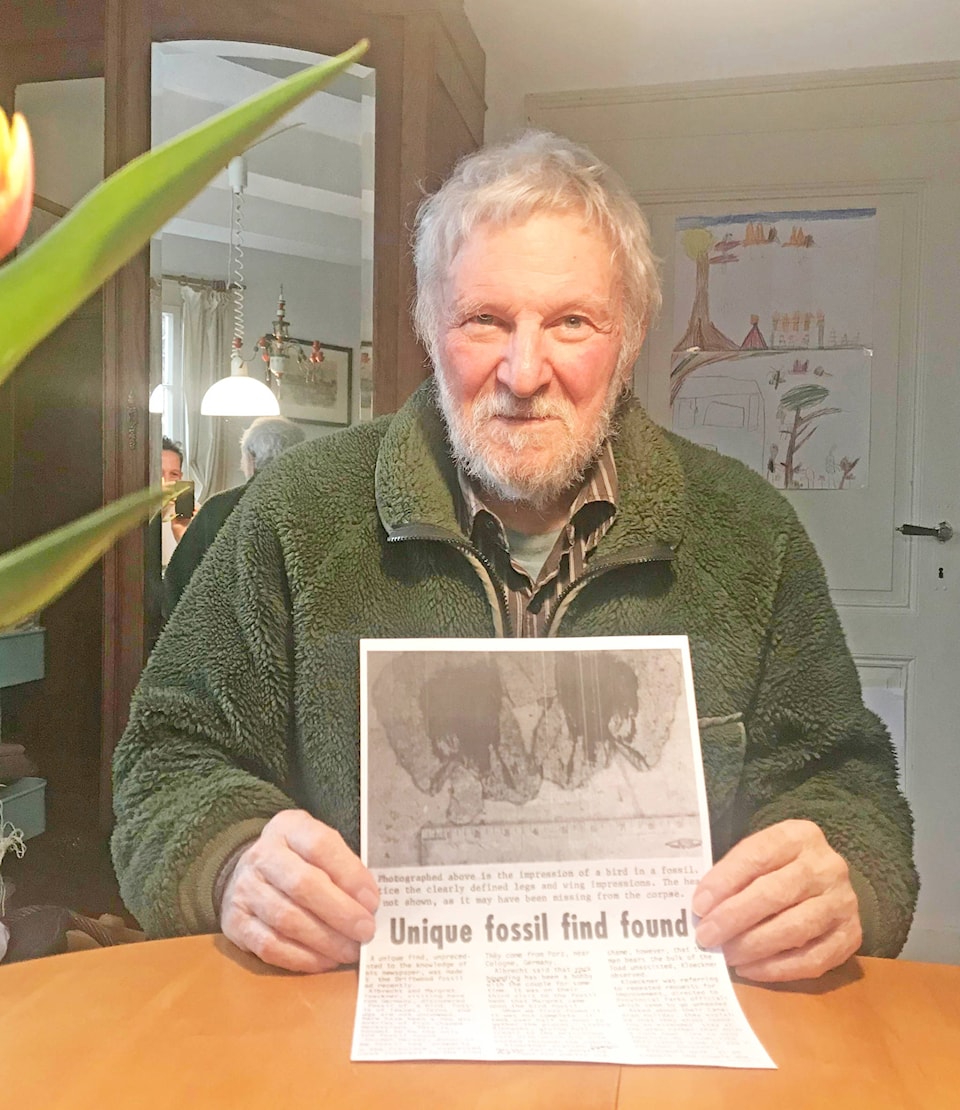It is a mild winter on the Okanagan Highlands in northwest B.C. Emerging maple and pine forests, punctuated by a series of shallow muddy lakes, are home to an eclectic range of insect and avian life. Small mammals are gaining an ever-expanding foothold in a post-dinosaur world.
A winged creature, part dinosaur, part shore bird, about 12 centimetres in length with long tail feathers and legs, ventures a bit too far into the muck and is trapped. Spring rains wash fine sediment into the lake burying the bird.
Geology happens
Fast forward 50-odd million years. It is 1970 and receding glaciers from the most recent ice-age have carved out the beautiful landscape residents of and visitors to the Bulkley Valley now enjoy. The petrified, ancient muddy lake beds are exposed in Driftwood Canyon.
Margret and Albrecht Klöckner, a couple visiting family in Smithers, uncover a unique block of shale in the Driftwood Provincial Park fossil beds.
“When we first found it, it was not complete,” Albrecht said at the time. “It took over half an hour to gather all the pieces.”
For 30 years, those pieces found a home in Porz, a town near Cologne, Germany.
Coming home
Enter Bruce Archibald, a PhD candidate at Harvard University in Boston Massachussets — now a professor at Simon Fraser University. It is 2000 and he is in the area around Smithers studying ancient insects. He decides to see what might be lurking in the backroom collections of the Bulkley Valley Museum.
“One of the volunteers, she just casually mentioned that, ‘oh yeah, there was a bird found here quite a while ago,’ and that was pretty exciting because birds are super, super rare,” Archibald said. “She brought me out a clipping, sort of an old, crumpled up newspaper clipping.”
That newspaper clipping, from the front page of the Aug. 26, 1970 edition of The Interior News, led Archibald on a two decade long quest.
Back in Vancouver, Archibald started cold-calling people in the Smithers area with various spellings of Klöckner to try and track down the couple.
“People were generally very nice and that’s a pleasant surprise,” he said. “And sure enough one of the people said, ‘yeah, they’re my relatives and they’re living in Germany.”
Archibald eventually managed to contact Albrecht Klöckner suggesting the Royal B.C. Museum might be the proper home for the fossilized specimen. Klöckner agreed.
“I knew someone who was in Germany and coming back to North America, so it got hand-carried here,” Archibald said. “This is an important fossil and they’re fragile, so hand-carrying is the way to go; you don’t want somebody throwing it in the back of a truck or something.
Over the years, Archibald also managed to collect two more specimens from the Ypresian period (56 to 48 million years ago), a mouse-bird collected by Patricia Petley from Driftwood Park in 1968 and a Cache Creek fossil found by Paul Casadio in 2001.
Archibald himself added to the collection with a leg and a foot from the Princeton area.
Science happens
“I recognized really early on that these fossils are great and B.C. materials are understudied and have great potential,” he said.
But Archibald is a bug guy, so he reached out to Gerald Mayr of the Senckenberg Research Institute and Natural History Museum in Frankfurt, Germany, a world-renowned expert on birds of the period. Rolfe Matthews of Simon Fraser and Gary Kaiser from the Royal B.C. Museum also joined the team.
“That time is interesting because it’s not long after the extinction of the dinosaurs, not long after the old world is gone and new world is starting to emerge,” Archibald said. “So, we’re seeing forests with maples and spruce and all those sorts of things we’re familiar with today, some extinct things, but really strange communities because they’re just emerging and under different climate, so that period of interval time is of interest.”
Over the course of the past year, the team carefully documented and analyzed the fossils and have written a scientific paper now available in draft form online. It will be published later this year in the Canadian Journal of Earth Sciences.
Archibald says they are just at the beginning of understanding the avian wildlife that inhabited the northwest 50 million years ago, but they’re off to an exciting start.
He is also looking forward to visiting again.
“I’ve really enjoyed coming up to Smithers,” he said. “Smithers has been a bright spot.”

